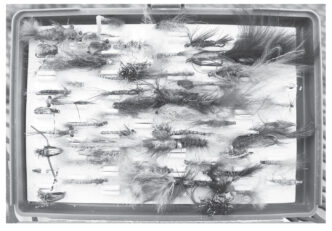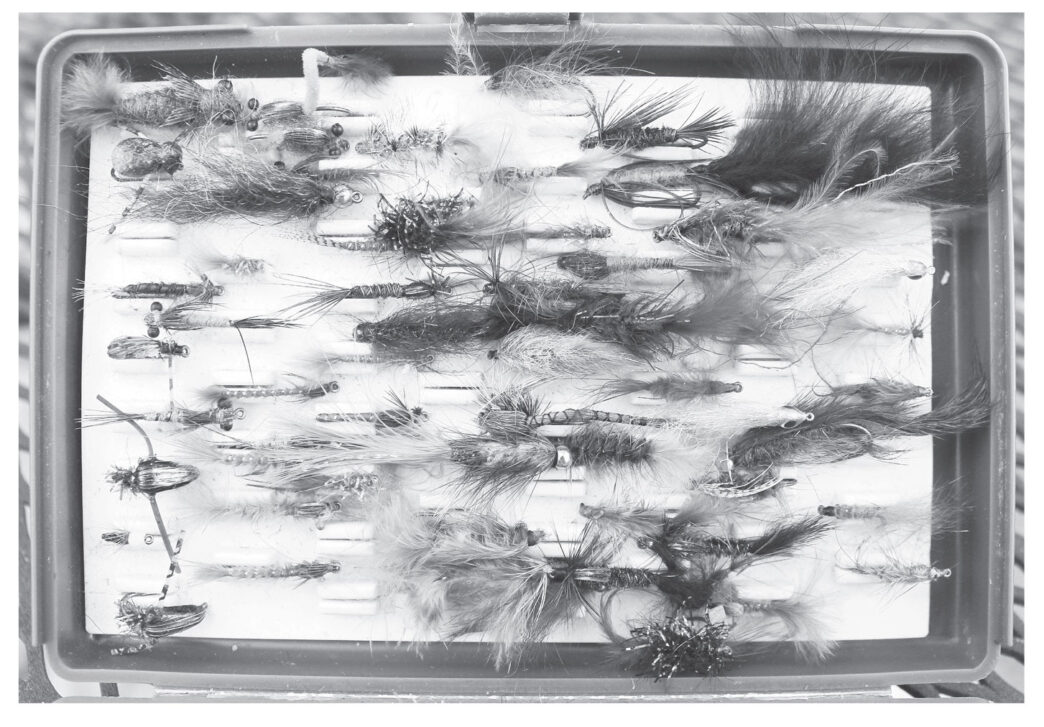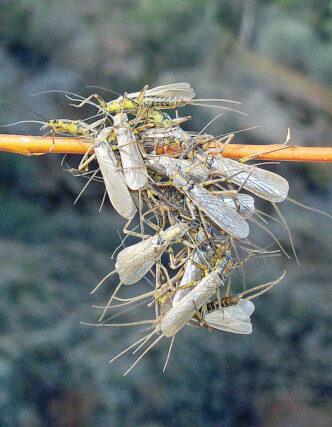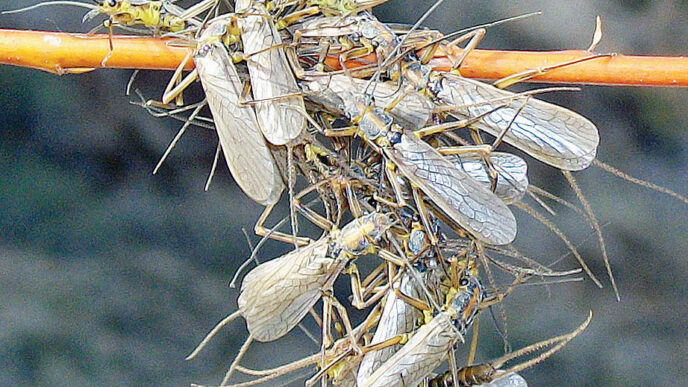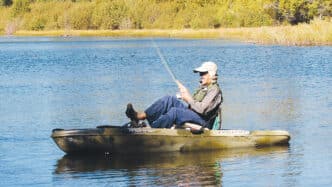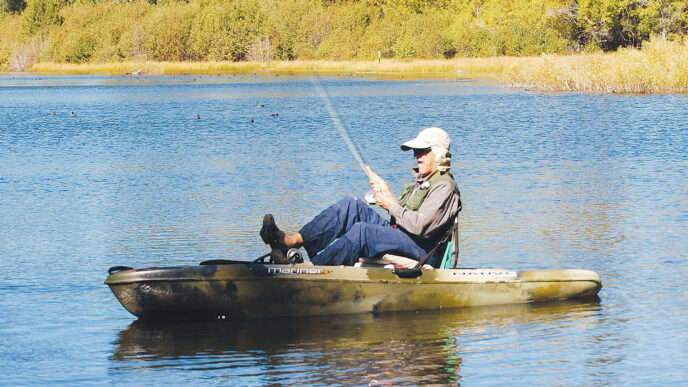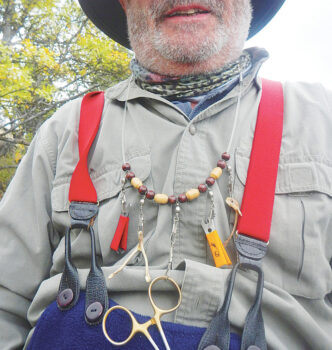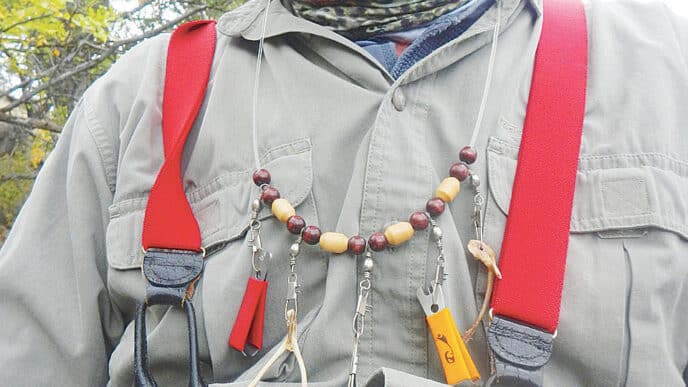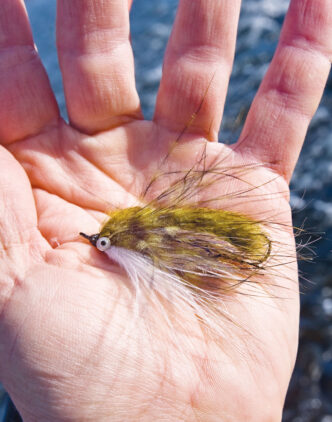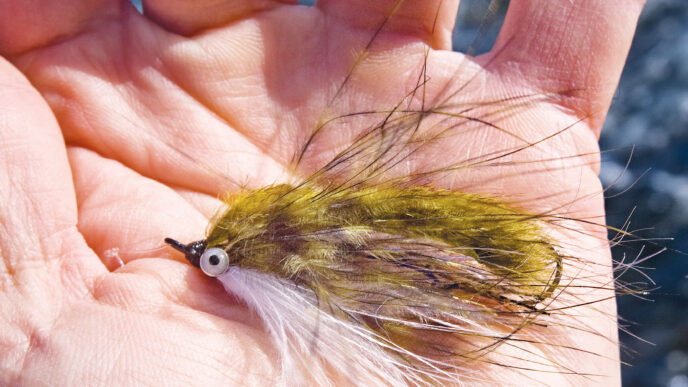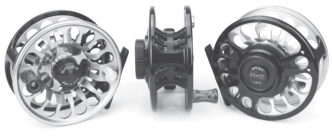A few years ago, I was lecturing in San Francisco on fly fishing private still waters before a group of women who ranged in experience from novice to expert and that included an international angling guru who was the hostess.
In one section of the program, I was talking about Callibaetis nymphs and showed images of seven flies, all a bit different, that imitate that stage of this insect. Included were patterns by Denny Rickards, Mike Mercer, and René Harrop. I mentioned that some patterns work on certain lakes and not on others and that some were specific to one location. Colors may vary from lake to lake and insect size may change, particularly as the season progresses. Afterward, an engaging woman came up to me and said, “Thank you for showing me how complex this stillwater thing can be.” She was dismayed and overwhelmed at first, but then realized that it made her sport inexhaustible and offered a lifetime of learning.
If you polled ten anglers, you probably would get ten different lists of the flies that any basic stillwater fly collection should contain, but here is a basic selection of patterns for stillwater trout, one with which I would be comfortable in most situations.
Parachute Adams, size 14 to 18
Griffith Gnat, 16 to 18
Cutter’s Martis Midge, 14 and 16
Cutter’s E/C Caddis, size 14 and 16, in olive and brown
Elk Hair Caddis, size 14 and 16 in black and tan
An ant pattern, size 14 to 18, in brown and black
Woolly Bugger selection in olive, black, and brown, size 8 to 12
Gray A.P. Nymph or Gold Ribbed Hare’s Ear Nymph, size 14 to 16
Black A.P. Nymph, size 10 to 18
Sheep Creek Special, size 12 to 16
Pheasant Tail Nymph, size 12 to 18
Mike Mercer’s or Rene Harrop’s Callibaetis Nymph, size 14 to 16
Denny Rickards’s Stillwater Nymph, size 12 to 16, in dark and medium olive with brown under-hackles
A damselfly nymph pattern, size 10 to 14, in olive and tobacco
A dragonfly nymph pattern, size 8 to 10, in peacock green and brown
Jay Fair’s Wiggle Nymph, size 10 to 14
Chironomid patterns, size 14 to 18, including Albino Winos, Zebras, WD-40s, and Snow Cones
Serendipity, size 16, in red and brown
Don Stahl’s Pine Creek Special, size 14 and 16
Of course, for terrestrials, if you have some ant patterns, you may want to add some beetle imitations, grasshopper patterns, or imitations of other bugs. And San Juan Worms can imitate midge larvae. Stillwater trout also are known to feed on snails, so you may end up with some snail imitations. As you can see, the list can grow. . . .
For many anglers, how to organize their fly boxes containing imitations such as these is an enduring problem. Do I include my attractor patterns with the generic flies? Do they go in the mayfly box, or should they be in with the caddis? Should dark Buggers go in one box and light or flashy ones in another? I’ve never worked out a perfect system and have been frustrated when I try to do so. Perhaps the problem reflects our personal organizational skills (or lack thereof ). Or maybe, faced with so many choices, we simply have a hard time making a decision.
In my case, the problem is complicated by the fact that I chase many species and fish, sometimes in the United States, sometimes in other countries, and I hate to throw a fly away, even if it has sat in that box for years and has never caught a fish, perhaps was never used. But even when just faced with organizing a collection of flies to fish my local still waters, organization is still a problem.
That’s because, as I began by noting, the flies you need to collect and how you organize them depends on many variables that will be particular to the places you fish and the times when you fish them. That is, a lot depends on the differences in insect hatches and forage foods from one body of water to another, from region to region, and across the span of the day and the length of the angling season. I have a health-care background and do a differential diagnosis list in my mind relative to the season, weather, and water conditions before each trip and when I reach the water. In fact, for most of the places that I fish, I set up a dedicated box with a few of the flies that I think I will most likely use, often taking flies from a larger mother box that doesn’t travel. That dedicated box may be the only box that is open all day in my boat or in a pouch on the float tube.
But how do you go about organizing elements as diverse as even the rudimentary collection that I’ve listed — generic streamers such as Woolly Buggers, midges in imitations both specific, such as the Martis Creek Midge, and general, such as the Griffiths Gnat, caddis, damselfly, and dragonfly imitations, specific mayfly imitations, in the case of the Callibaetis patterns, generic mayfly imitations, such as the Adams, and more?
There are some obvious are principles you can follow. One way is to catalog your flies according to the kinds of creatures likely to be encountered on a lake or pond. That means assembling a chironomid box, an ant/beetle box, a midge box, a caddis box, a Callibaetis box, maybe a small San Juan worm box or a snail box, and a damselfly/dragonfly box. Alternatively, you could catalogue them by fly type: a streamer/bugger box, a spinner box, a dry-fly box, a nymph box. . . . Of course, either way, you’re likely to end up with flies that don’t fit whatever categories you use, the categorizer’s dreaded “other.” Call it a “miscellaneous” box.
The contents of that box likely will grow. That’s one reason why, whatever way you choose to organize your stillwater fly collection, you need to cull your collection periodically. I frequently refine existing patterns and try experimental flies that are given me by angling friends or that I dream up myself. Some don’t work and just sit there, taking up room. You need to go through your boxes at least seasonally — better yet, monthly. New Year’s Day, the traditional start date for resolutions, is a great time to cull your fly boxes, too. Don’t be fainthearted or a hoarder. Pull out the stuff that is beyond its prime and throw away the flies that were a good idea at the time, but didn’t cut it.
Label those boxes, so you know what’s in them. Often, I will look through several boxes in the morning of a venture on a lake, just to remind me what is in there and where it is located. Don’t forget to put your name and contact information on those boxes (and on everything else). And while you are at it, clean out your gear bags.
How you organize your stillwater fly collection is partly determined by the fly boxes you use, too. I have a thing about fly boxes. I love the ones with little compartments. A psychologist friend suggested that the way I organize my fly collection falls in the category of obsessive/ compulsive disorders that some call “anal.” Years ago, I discovered the small, sturdy, 12-compartment, clear-plastic Myran fly boxes. I bought a dozen on the spot and have since bought more. They are about half an inch thick and roughly four inches wide by six inches long. I can get 6 to 12 smaller flies in each compartment, which adds up to a lot of flies in one box.
It’s important to do maintenance on your fly boxes so your fly collection remains safe. Obviously, if moisture gets in for whatever reason, you need to open the lids and dry those flies out ASAP. Flies will last decades if properly cared for. I lightly spray my fly boxes with an insect killer and trip a bug bomb in my fly tying material closet and fly tying room twice a year, too. I find that regularly rearranging the flies makes a huge difference in keeping my fly collection in order After three days on the water, boxes that started out with neat little rows of organized flies are in disarray. The first step is to take the time during an evening and secure all the loose flies in a slot or compartment somewhere. If there is more time under the Coleman lantern, put them back in order, in the proper location and pointing the same way. Commercial breaks during football games are also an excellent opportunity to organize flies in their proper boxes.
Stillwater fly fishing can be as complex as you care to make it. That is one of the many beauties of this endeavor. With increasing complexity, however, comes the need for method and organization. However you organize your fly collection, keep at it. Then, when you’re fishing and need something, there will be a place for everything and everything in its place.
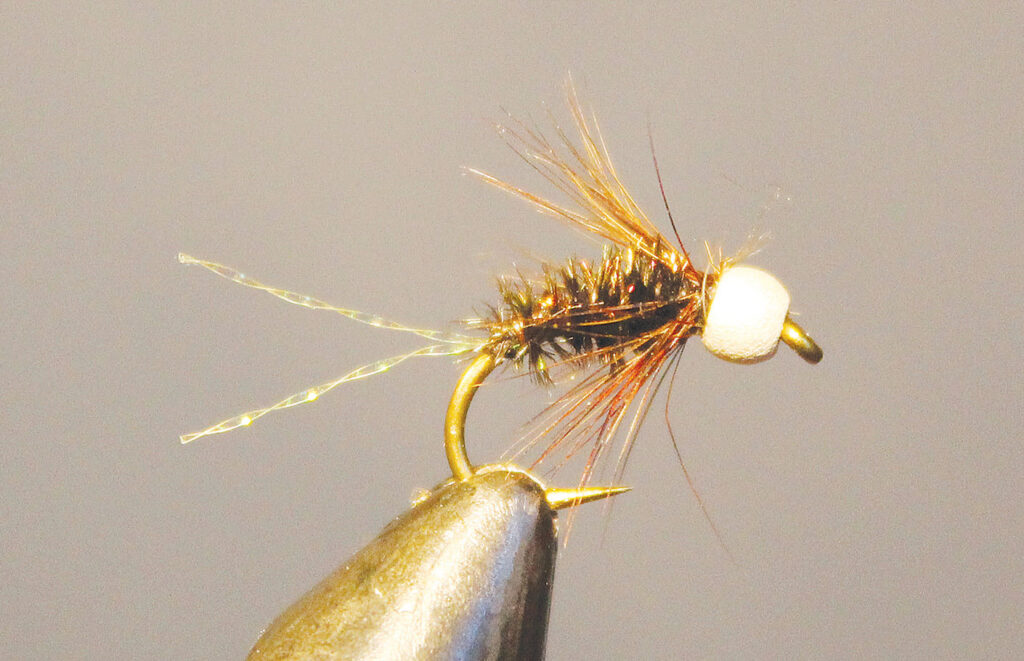
Don Stahl’s Pine Creek Special
I stumbled on this generic pattern, which could represent many different insects, at a fly-tying conclave in Redding a number of years ago. The late Don Stahl popularized the fly in the Alturas area. I suspect that it evolved from the classic Brown Hackle Peacock. Amber Krystal Flash tails and a white bead or ostrich feather for a head add to the magical fish-catching iridescence of peacock herl. When I discovered the fly, I immediately started using it as a trailer behind damselfly nymph imitations, Woolly Buggers, or leech patterns. I also use it as a single fly and cast it to swirling trout that I suspect to be taking midge pupae. Sometimes I cast it out and let the fly settle into the depths before starting a retrieve in a slow series of short pulls. Or I hang it with another fly under an indicator. It also works fished as a nymph in streams. It is most effective on size 14 and 16, scud-type hooks.
—Trent Pridemore



